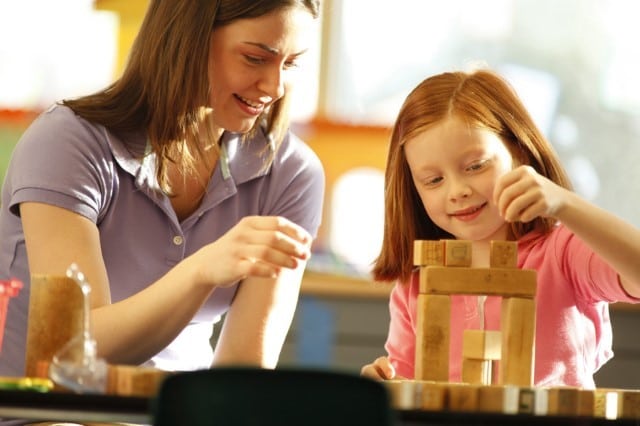Brought to you by Nemours Brightstart!
When you think of kids and pre-reading skills, you probably picture a preschooler at a table, tracing letter shapes or learning words like “dog” and “run.” But the skills that lead to reading success are varied and complex, and they start developing from the moment your child is born. You might be surprised to learn that many of the things your child does every day can be categorized as one of four pre-reading skills: Oral Language, Letter Knowledge, Phonological Awareness and Beginning Writing.
These terms can sound cold and clinical, but their everyday implications are surprisingly familiar. Remember all those times you sang “Ring Around the Rosie” with your three-year-old? You were helping her build phonological awareness and oral language skills. The day your toddler stuck gold star stickers all over the living room furniture? He was practicing the fine motor skills that contribute to beginning writing. By helping your child practice those pre-reading skills today, you can set him up for reading success later.
Here are a few ways to get started:
- Visit ReadingBrightStart.org to find easy, fun and inexpensive activities designed to strengthen pre-reading skills. Activities are organized by age and pre-reading skill.
- Check the Pre-Reading Milestones for kids ages birth to five at ReadingBrightStart.org.
- If your child is three, four, or five years old, take the free Preschool Reading Screener. You’ll get your child’s reading readiness results in just a few minutes, along with a customized action plan to strengthen any skills that she may need help with.
- Keep reading with your child. Nothing can replace the value of sharing books with your child on a daily basis. Recommended books and reading guides–organized by age – are at ReadingBrightStart.org.
If you have a concern or question about your child’s emerging pre-reading skills, talk with your pediatrician or your child’s teacher.
Although each pre-reading skill develops from birth through age five, each child grows at her own pace. And it’s important to remember that the skills overlap–so a child who recognizes more letters may be better with beginning writing.
Like so many other parts of learning and growing, pre-reading skills develop through small, everyday interactions. Keep reading, stay positive, and watch your growing reader blossom–one skill at a time.
[box type=”none”]
- The ability to understand and use spoken language
- The recognition and naming of letters and their sounds, and the understanding of the difference between print and pictures
- A specialized type of listening that includes the ability to identify and play with different parts of words
- The fine motor skills and eye-hand coordination that help children hold and use crayons, markers and pencils, and the understanding that thoughts can be communicated with words and pictures
[/box]
Thank you to Nemours Reading BrightStart! for sponsoring this post. Nemours Reading BrightStart! Awareness Campaign is supported by a grant from The Chartrand Family Fund at The Community Foundation for Northeast Florida.

















